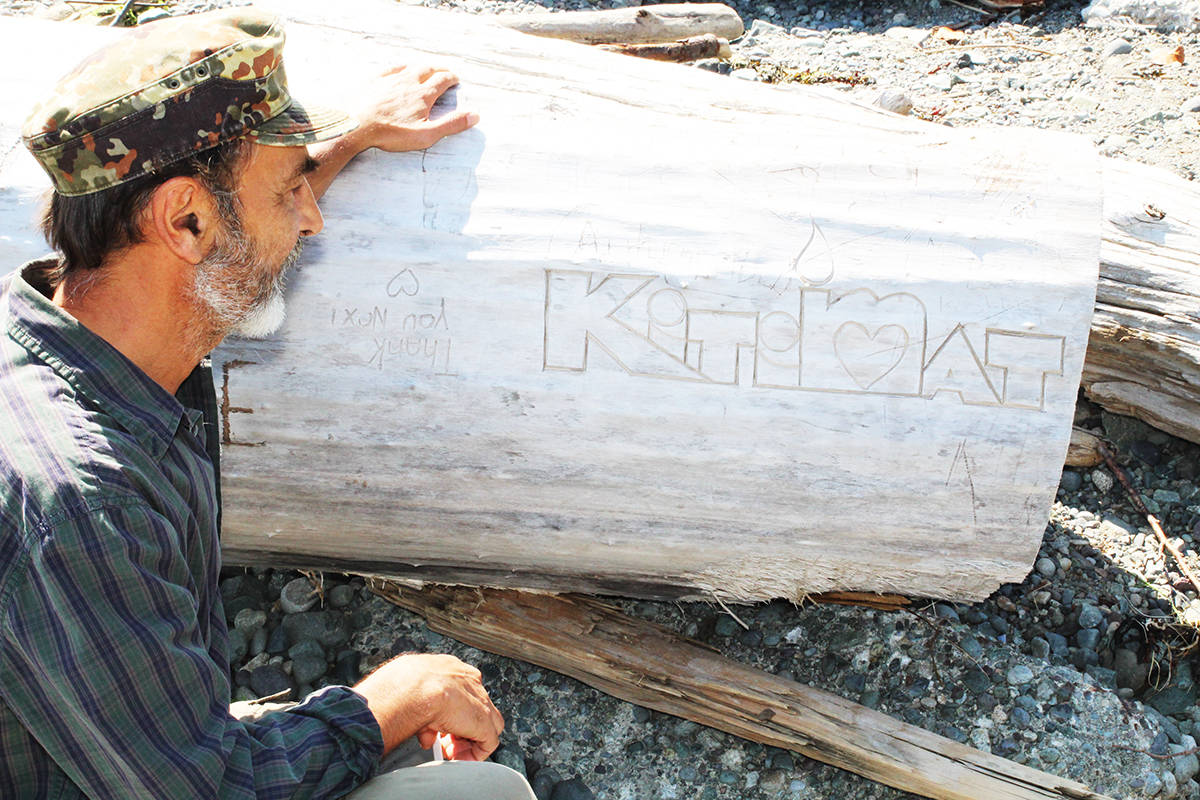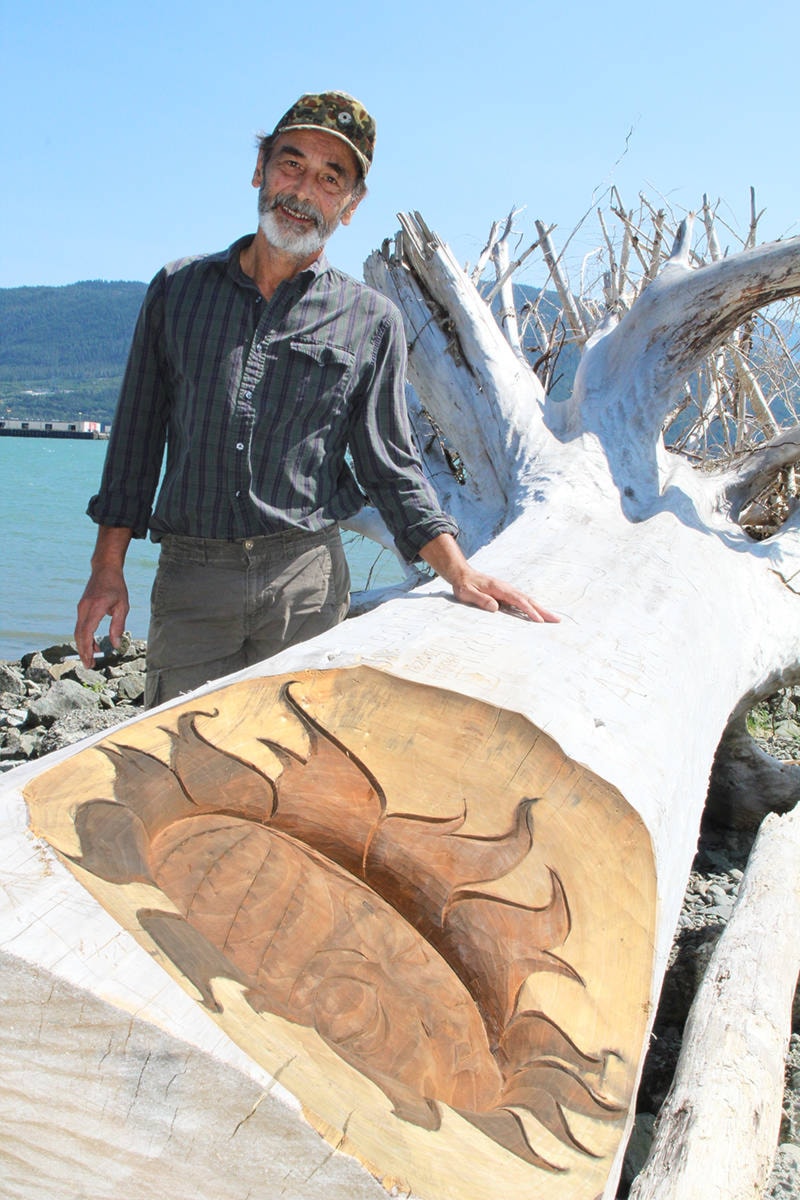Volde Simanis sighs, looking across from the boat launch towards Hospital Beach, at the mass of machinery and equipment, a dirt road crisscrossing the bay to the construction site for Rio Tinto BC Works’ new wharf.
“It’s all going to change,” said Volde, echoing the sentiments of many longtime residents in the area. “It’s time I move again – I won’t be able to live here anymore.”
The 59-year-old sculptor, artist and carpenter knows change - he came to Canada from Siberia in 1997 when he was 37, with his then-wife and two children and nothing more than a few suitcases, eventually ending up in Kitimat many years later.
His story is as varied and interesting as the stories of countless pioneers who came to Kitimat from all corners of the world. Sadly for Volde, the push of progress means his story doesn’t end here in Kitimat.
Voldemar “Volde” Simanis was born in Siberia, close to the infamous gulags, or forced labour camps, that imprisoned over 18 million people from the 1920s to early 1950s, many of those political prisoners who were jailed because they were suspected of opposing the Soviet Union government.
Volde knew the gulags well – his father was imprisoned for ten years before being granted amnesty. After his release, Volde’s father took his wife and two children and moved to Latvia.
Volde’s mother, however, took the children and returned to Siberia, settling in Yakutsk where Volde had spent his childhood.
He started carving when he was only seven years old, when one day while staring out the window waiting for his mother to come back home he started carving a design into the wooden window frame with a pocket knife.
Then he couldn’t stop – carving, designing and creating furniture for indoors and outdoors.
“Art – I knew I was born with it and that it would be my life’s work,” said Volde.
Determined to take up carving as a career, Volde completed his army training and enrolled to study carving, which meant at the time that he was also required to study to become an art teacher.
He studied for four years, during which time he and his fellow students collaborated on a number of projects around the city, producing everything from furniture for children’s play parks to benches for bus stations.
“Many years later my friends sent me photographs of the streets of Yakutsk – the benches were still there,” said a proud Volde.
When he turned 32 he opened up his woodwork shop, filled with big industrial machines. His break came while helping Canadian engineering and architectural firm Ferguson Simek Clark with supplies and construction on a subdivision they were building in Yakutsk.
“I liked the Canadian guys so much I decided I had to emigrate to the country they came from – Canada,” said Volde.
A landed immigrant, Volde, his then-wife and his two children, 13-year-old Eva and seven-year-old Voldemar Jr., arrived in 100 Mile House and settled down, determined to begin a new life in Canada.
His first job was working for a logging company, which presented difficulties from the start.
“I didn’t want to cut down the trees, so they got me to cut the smaller branches off the trees once they had been chopped down,” said Volde.
He would have carried on working had it not been for the fact that he couldn’t speak English – warnings shouted to him about trees falling in his direction went unheeded, and often he found himself surrounded by falling leaves and branches.
He left logging and opened a woodworking business in 100 Mile House, where he stayed for three years before moving his family to Victoria.
There he opened a cabinetmaker’s shop in 2000, producing furniture, as well as masks and totem poles for clients around the world.
In 2015, following a lengthy divorce, he decided to move to Kitimat on the advice of a longtime friend who had moved to the town years earlier.
“Kitimat was so beautiful and there was a lot of work, so I decided to settle here,” said Volde, who quickly found work with a local construction company, deciding he would make Kitimat home.
However, after LNG Canada’s final investment decision was announced in October last year, Volde started seeing subtle changes in Kitimat at first, and lately, drastic changes.
“The industrial development has already ruined Kitimat. It is time to move on to somewhere quieter,” said Volde, looking at a cloud of dust rising from the earthworks, sitting on one of his favourite driftwood logs.
Having made the decision to leave Kitimat, for the last two months he has been carving what he called “make goodbye from Kitimat” – intricate designs in large pieces of driftwood.
The log that he was sitting on has a large sun carved into it on one side, and the word “Kitimat” carved onto the other side. The design took almost ten hours to finish, carved over the course of a few days.
After completing the design, Volde paints the wood with a special stain that protects it from the sun, containing mainly vinegar.
He points to another design further along the log, which someone had attempted to cut out using a chainsaw.
“This art is part of our citizens’ identity. They have carved their names into the log, which is a spiritual log for some. I just wish people would leave it alone – my art is meant to be for everyone.”
He said he hopes that the high tide will dislodge that massive log and wash it out to sea, almost like a message in a bottle.

